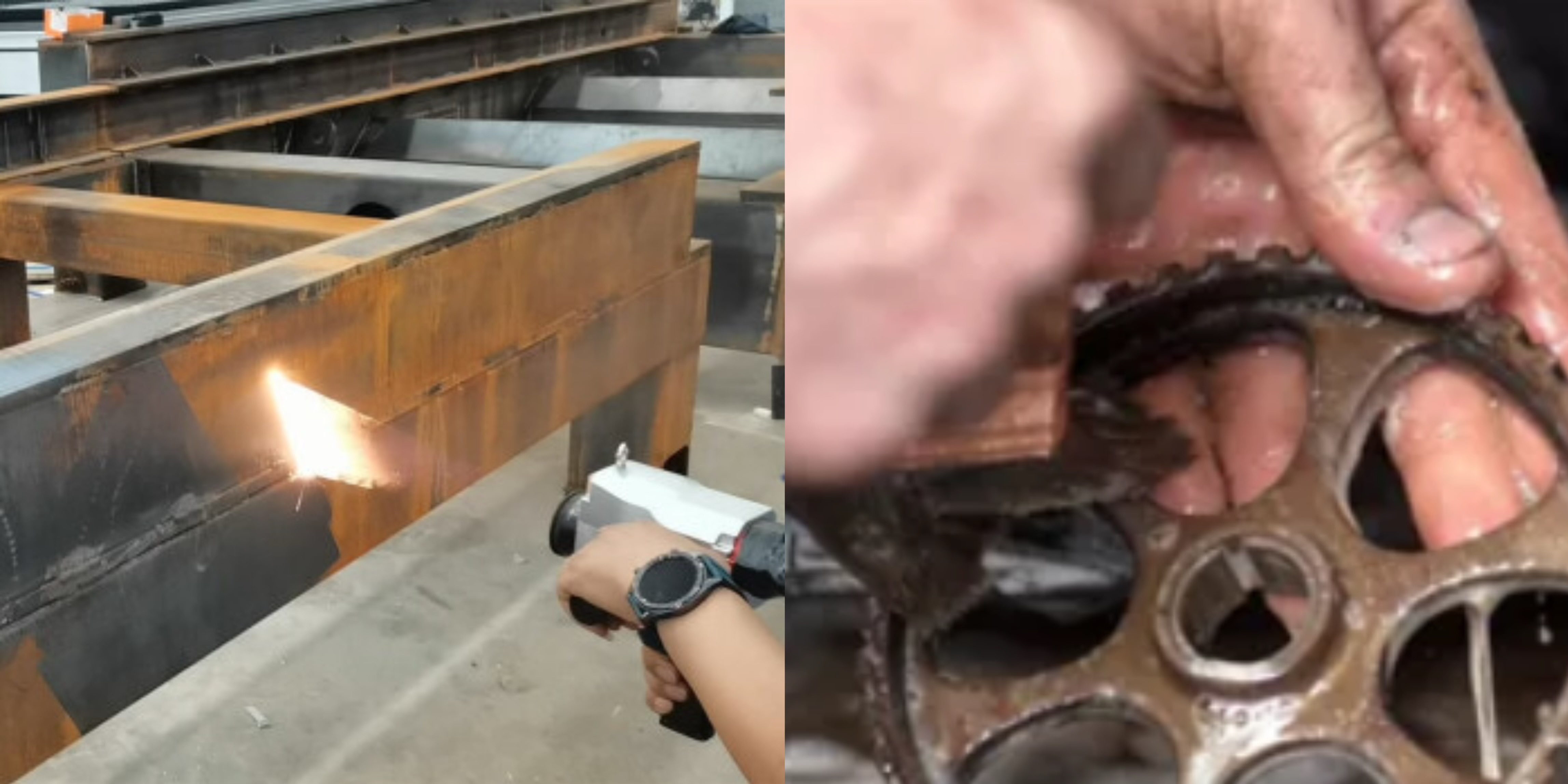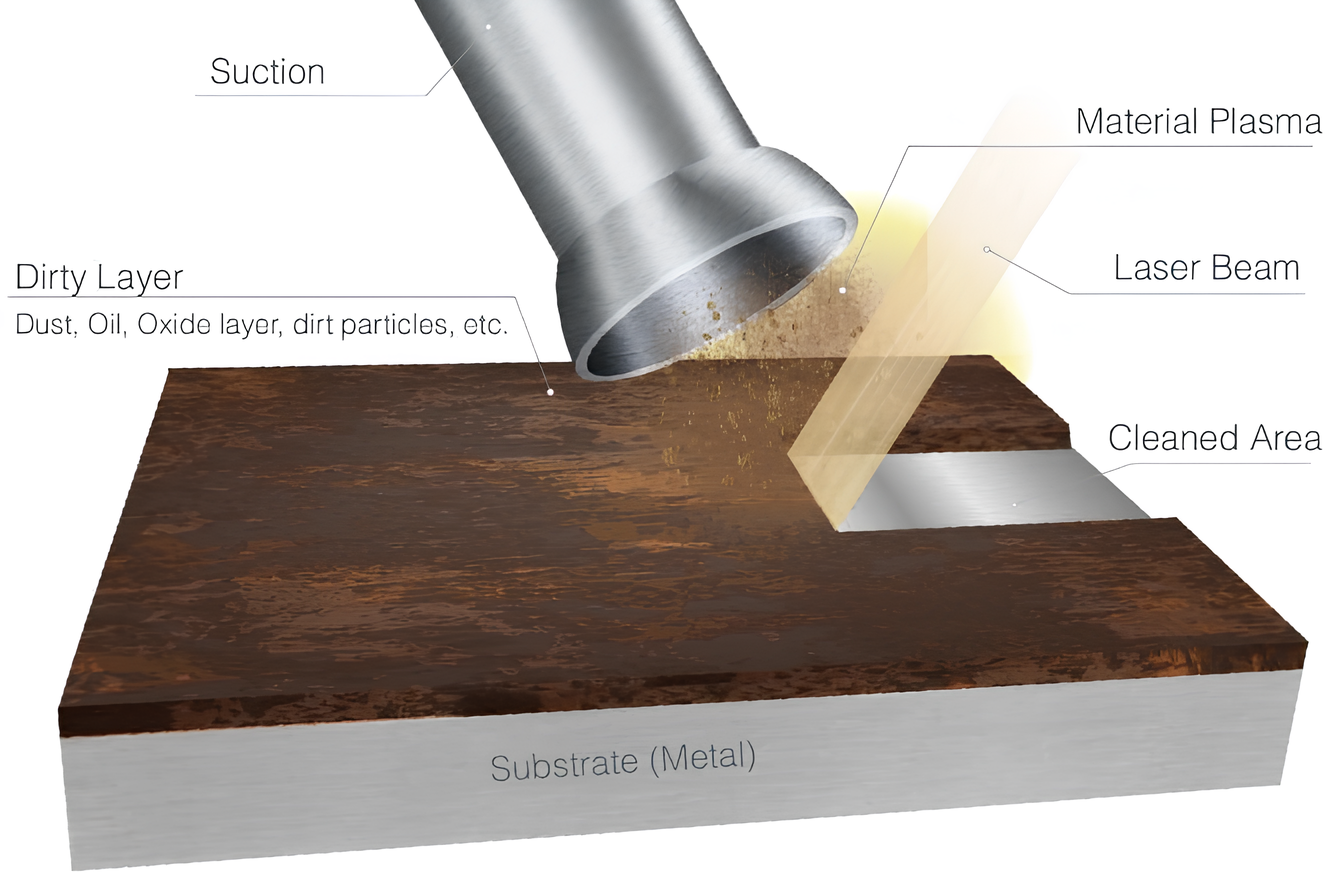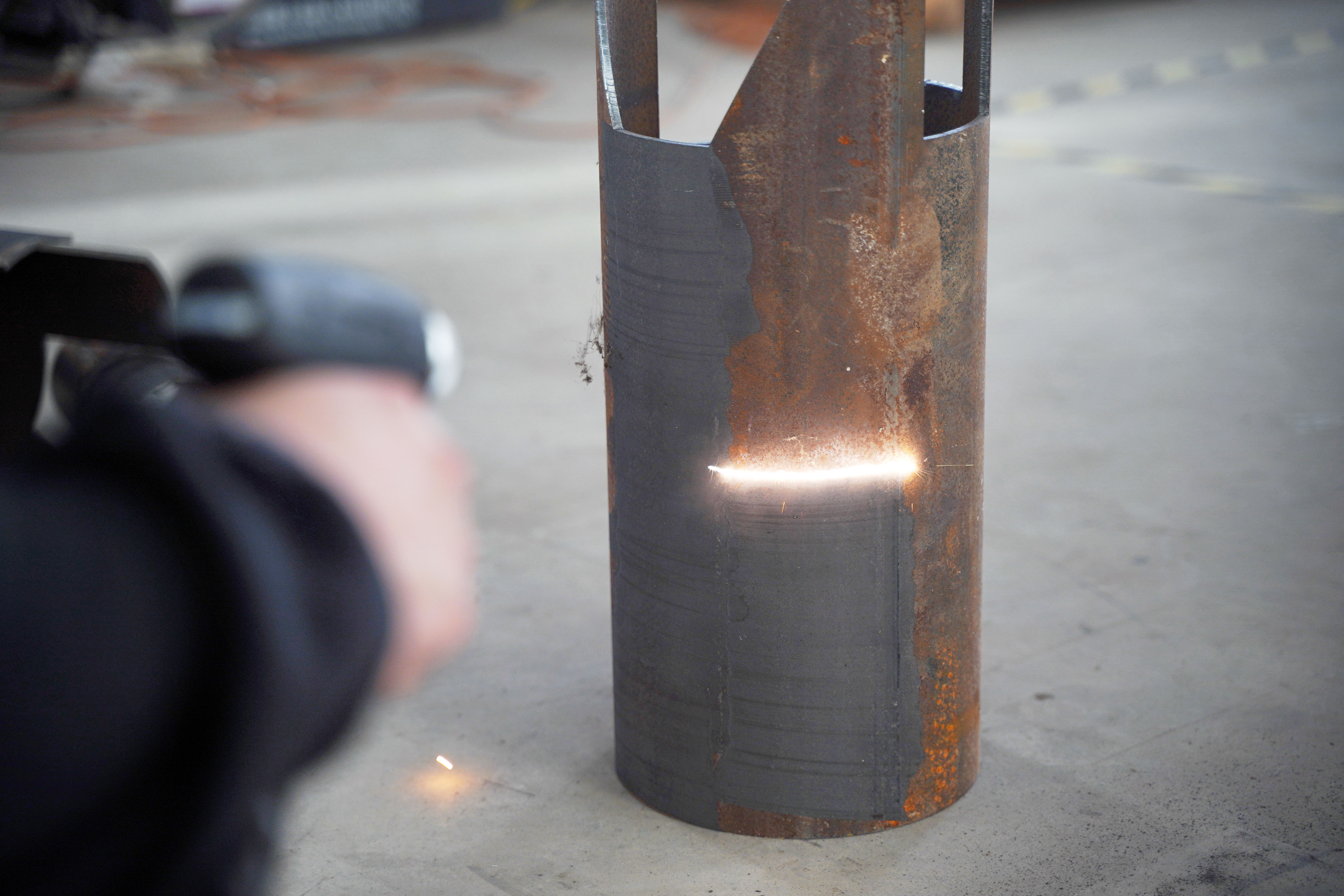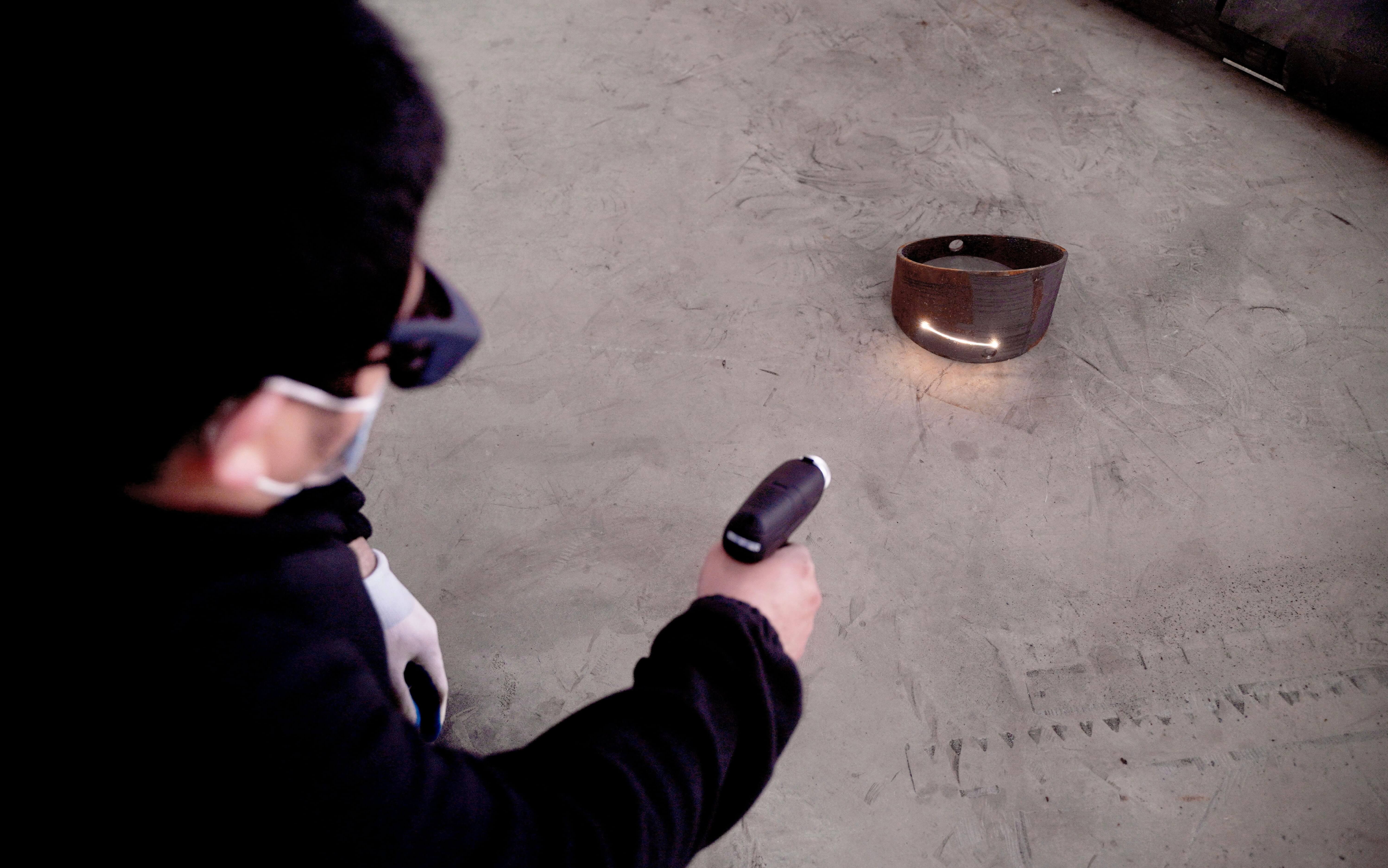Imagine effortlessly removing rust, paint, or grease without harsh chemicals, water waste, or surface damage. That’s the power of laser cleaning—an advanced, eco-friendly alternative to traditional methods like sandblasting and chemical cleaning.
While conventional techniques rely on abrasive materials and toxic solvents, laser cleaning offers a precise, contact-free solution with minimal waste. But how exactly does it compare? Let’s explore the key differences between laser cleaning and traditional cleaning to see which one truly stands out.
Laser Cleaning vs. Traditional Cleaning Comparison Table
| Category | Laser Cleaning | Traditional Cleaning |
|---|---|---|
| Cleaning Efficiency | ≥1㎡/min | 0.2-0.5㎡/min |
| Impact on Substrate | Non-contact, no damage | Prone to corrosion and scratches |
| Environmental Impact | 0 chemical waste, eco-friendly | Produces waste liquid/dust |
| Precision | ±0.01mm (high precision) | ±0.5mm (low precision) |
| Service Life | Laser head lasts 100,000 hours | Frequent wear, high consumable usage |
| Safety | Low risk, non-toxic, no hazardous chemicals | Chemical hazards, potential health risks |
| Long-term Cost | One-time investment, low maintenance | High consumable and labor costs |
–
Technology of Two Cleaning Methods
Laser Cleaning Technology
Laser cleaning machine uses powerful laser beams to remove dirt through burning or turning it to gas. The laser sends short pulses that work directly with the surface. This removes dirt or turns it to gas without damaging the main material. Key features include:
- Non-contact process that reduces wear on equipment.
- Can be programmed and runs by itself, giving the same results each time.
- Targets exact spots, removing only specific dirt layers without hurting nearby areas.
- Better for the earth, making little waste and using no harsh chemicals.
Laser cleaning works at a rate of 1-10 cm²/s, making it good for jobs that need exact cleaning.
Applications of Laser Cleaning
I’ve seen laser cleaning used in many fields, such as: – Precision cleaning of delicate surfaces: Perfect for electronics, medical devices, and old artifacts with no damage. – Metal surface cleaning: Removes rust, paint, and coatings from metal surfaces. – Mold and die cleaning: Used in factories to clean molds and dies. – Surface preparation: Cleans surfaces before welding or painting. – Artwork and antique restoration: Restores old artifacts and art pieces without harm. – Aerospace and aircraft parts: Cleans aerospace parts and aircraft wings.
Traditional Cleaning Technology
Old cleaning methods use physical force, chemicals, or rough scrubbing. Common methods are:
- Chemical Cleaning
- Mechanical Cleaning
- High-Pressure Water Jet Cleaning
- Electrolytic Cleaning
- Steam Cleaning
These ways often need hand work, use rough or harsh chemicals, and can harm soft surfaces. They clean more slowly, and how well they work changes based on the job.
Limitations of Traditional Cleaning
While used a lot for daily cleaning jobs, old methods have problems with special or factory tasks. They can’t clean as exactly and hurt the earth more, making them worse for jobs where laser cleaning works best.
Both Cleaning Methods Effectiveness
Laser cleaning machine offers better precision and results than old cleaning methods. Studies show laser cleaning removes up to 99.9% of contaminants, while old methods remove only 90-95%. This precision lets us target specific dirt and remove it without harming the material beneath.
Key Effectiveness Comparisons
- Contaminant Removal: Laser cleaning removes 99.9%, compared to just 90-95% with old methods.
- Consistency: Laser cleaning gives even results on large areas, while hand cleaning often varies due to human error or tiredness.
- Accessibility: Laser cleaning reaches tight spaces and detailed shapes that brushes or cloths can’t touch.
Advantages Over Traditional Cleaning
- Tough Dirt: I find laser cleaning works better on hard-to-remove substances like rust, paint, and factory grime. From my experience, it removes rust in minutes instead of hours of hard scrubbing.
- Detailed Parts: The laser beam reaches areas that are hard to clean with old methods. I recommend it for cleaning small parts and complex equipment.
For jobs needing exact, complete, and even cleaning, I’ve seen laser cleaning beat old methods in almost every way.
Environmental Impact of These Methods
Reduced Chemical Use
Laser cleaning is an eco-friendly solution that eliminates the need for chemicals or solvents, preventing toxic waste and pollution. In contrast, traditional cleaning methods often rely on harsh agents that contaminate water and soil.
Minimal Waste Generation
Laser cleaning generates minimal waste, only removing contaminants without additional byproducts. In contrast, methods like sandblasting produce large amounts of waste that require disposal and negatively impact the environment.
Lower Emissions
Laser produces minimal emissions and significantly fewer VOCs than traditional cleaning methods. In contrast, standard cleaners release VOCs that degrade air quality, contribute to smog, and harm both human health and the environment.
Energy Efficiency
Laser systems need electricity but use less energy than big traditional cleaning operations.
Reduced Environmental Contamination
Laser prevents harmful pollutants from entering ecosystems, unlike traditional cleaning chemicals that persist in nature for years, accumulating in plants and animals.
Two Cleaning Methods Cost Considerations
Comparing laser cleaning and traditional cleaning methods, cost is key for making good choices. Each option affects your wallet differently based on what you pay now and what you save later.
Initial Costs
You’ll spend more upfront for laser cleaning systems. Basic laser cleaning machine for small jobs cost about $5,000 to $8,000. High-end systems for big jobs cost between $17,000 and $65,000. Traditional cleaning needs less money to start – just basic tools and supplies. But these early savings can lead to higher costs down the road.
Operational and Long-Term Costs
I’ve found that laser seems pricey at first but saves money over time because:
– Lower labor costs: Workers do less manual work, cutting labor costs.
– No consumable materials: You don’t need to buy chemicals, abrasives, or solvents.
– Reduced waste disposal expenses: No chemicals means no waste disposal fees.
– Minimal damage to surfaces: The gentle cleaning saves money on repairs.
In my experience, traditional cleaning costs more over time because you need:
– New cleaning supplies and chemicals regularly.
– More workers for hands-on cleaning tasks.
– Replacement cleaning tools more often.
– Money to fix surfaces damaged by harsh cleaning.
I’ve seen that laser cleaning costs about $1 per hour to run. Traditional methods cost much more or less depending on materials and workers needed.
Case Study: Long-Term Cost Comparison
Let’s look at cleaning a 1.2-million-gallon anaerobic digester:
– Traditional cleaning costs $2,620,050 over 5 years ($524,010 each year).
– Laser cleaning costs only $710,625 over 5 years ($142,125 each year).
I can clearly see big savings with laser systems for large jobs.
You need to balance the higher starting costs of laser cleaning against ongoing costs of traditional methods. From what I’ve seen, laser cleaning often wins on cost in the long run.
Safety Aspects of Laser Cleaning
Laser cleaning machine offers major safety benefits compared to old-style cleaning methods. Here are the main advantages:
Advantages of Laser Cleaning Safety
- Reduced Chemical Exposure: Laser systems removes the need for harsh chemicals. This cuts down skin rashes, breathing problems, and pollution.
- Lower Physical Hazards: Unlike sand blasting, laser cleaning creates no harmful dust that damages lungs or eyes. It also reduces risks from high-pressure tools.
- Precise Control: Laser systems allows targeted cleaning, which lowers the chance of damage to nearby areas or fragile items.
- Improved Ergonomics: I’ve found that laser systems need less physical effort, cutting down strain and repeated motion injuries.
- Lower Noise Levels: Laser systems run with less noise than rough cleaning methods, cutting the risk of hearing damage.
Unique Safety Considerations for Laser Cleaning
Though laser cleaning is safer, it has its own safety needs: 1. Eye Protection: Workers must wear special laser safety glasses to prevent eye damage from laser beams.
2. Controlled Work Areas: Work spaces need marking as laser safety zones. Access must be limited with proper signs.
3. Training Requirements: Workers need proper training in laser safety and equipment use to stay safe.
4. Fire Risks: Take extra care when cleaning items that can burn. Use the right settings and safety steps.
5. Electrical Safety: Because this uses high-voltage gear, follow strict electrical safety rules to prevent shocks.
Incident Reduction Data
Safety data shows the benefits of laser cleaning when using proper safety steps: – A 75% reduction in chemical exposure-related incidents.
– A 60% decrease in respiratory problems among cleaning staff.
– 40% fewer ergonomic injuries reported.
Both Cleaning Methods Surface Impact
Laser Cleaning: Minimal Surface Impact
- Laser cleaning machine uses no abrasion and no contact. This cuts the risk of damage to materials beneath.
- It removes dirt and grime without harming nearby materials or fragile surfaces.
- Surfaces cleaned by laser often end up smoother with less roughness.
- Example: When we clean aluminum alloy with a MOPA pulsed fiber laser, the surface stays as smooth or gets smoother than before.
- Under the microscope, I can see that MOPA pulsed lasers cause very little damage. CW fiber lasers, on the other hand, can melt the metal.
- I’ve found that laser cleaning’s gentle touch helps make appliances, countertops, and floors last longer.
Traditional Cleaning: Abrasive and Impactful
- Methods like sandblasting and chemical cleaning scratch surfaces and can harm the base material.
- Sandblasting wears away surfaces and removes material.
- Chemical cleaning can eat away at surfaces, change their color, and leave behind residue.
- Mechanical cleaning causes wear over time with repeated use.
- Harsh cleaning methods can strip away protective coatings or thin layers. This makes surfaces wear out faster.
Comparative Impact Insights
- Precision Advantage: With laser cleaning, I can control exactly how deep and where I clean. This keeps valuable or delicate items safe.
- We use this for aircraft parts, tiny electronic components, and restoring historic artifacts.
- Drawbacks of Traditional Methods: Old-school cleaning makes it hard to clean complex shapes or detailed surfaces. These methods lack proper control.
Summary
As industries move toward greener and more efficient solutions, laser cleaning is emerging as a game-changer. With its precision, minimal waste, and eco-friendly operation, it outperforms traditional cleaning methods in many ways. While old techniques still have their place, the future of cleaning is clearly shifting toward laser technology. Whether for industrial use or delicate restorations, laser cleaning offers a smarter, safer, and more sustainable choice. Are you ready to embrace the future of cleaning? For more details about laser cleaning machine or to get a quote, contact us today!





Recent Comments